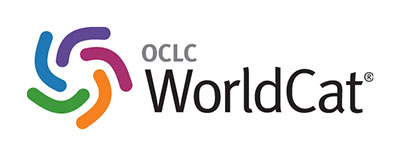Research on the acceptance of soy in La Troncal
DOI:
https://doi.org/10.26871/killkanatecnica.v4i2.718Abstract
The main objective of this paper is to present the results of the market study carried out by the Catholic University of Cuenca, extension of San Pablo La Troncal, with the students of the business career.Soy is a grain that belongs to the family of the legume, whose main ingredient is oil and high protein content, for this reason, it is used as food for human and animal consumption, as the main benefit, reducing sugar in the blood of those diabetic people, in addition to reducing cholesterol, among others. The objectives in the current research process were the valuation of the potential demand of soy products, the sensory evaluation and the design of market strategies. The research model used was the probabilistic quantitative model. The information was collected through a survey. The population studied in the canton La Troncal corresponded to 54,389 inhabitants. The calculated sample was 276 people with a confidence level of 94% and a margin of error of 6%. The results and conclusions that were determined in the consumption of soybeans were 82% acceptance, who would consume them at least twice a week. The derivative of the highest consumer acceptance is "soy milk". The strategies are formulated according to the marketing combination (price, product, promotion and advertising space).
Downloads
References
Infoagro. (2015, Julio) Infoagro.com. [Online]. http://www.infoagro.com/
Mayo de Juan Vigaray. (2012, S/M) RUA. [Online]. https://rua.ua.es/dspace/bitstream/10045/20711/1/Tema3_mdo_dem_consum_STUD.pdf
Naresh K. Malthotra, "Investigacion de Mercado," in Un enfoque aplicado. Mexico: Pearson Educacion, 2008, p. 7.
Eduardo Calero H. (1983, DICIEMBRE) Instituto Nacional de Investigadores Agropecuarios. [Online]. http://repositorio.iniap.gob.ec/bitstream/41000/2031/1/iniaplsbt50.pdf
R Guaman et al., "Manual del cultivo de soya. N. 32," Quito, 1996.
MAGAP. (2014, Enero) Sinagap. [Online]. http://sinagap.agricultura.gob.ec/pdf/zae/soya.pdf
SR Teixeira et al., "Isolated soy protein consumption reduces urinary albumin excretion and improves the serum lipid profile in men with type 2 diabetes mellitus and nephropsthy.," Redalyc, p. 134, 2004.
Soyfoods. (2009, JUNIO) UNITED SOY BEAN BOARD. [Online]. http://thesoyfoodscouncil.com/wp-content/uploads/Soyfoods-101.pdf
H ARKIN and R. COLTON. (1963) Trove: NLA. [Online]. https://openlibrary.org/books/OL5882793M/Tables_for_statisticians
B Pujol, "Direcion de marketing y ventas," in Direcion de marketing y ventas. Madrid España: Cultura S.A, 2002, p. 400.
Z Liu et al. (2004, Feb.) Publmed.gov. [Online]. https://www.ncbi.nlm.nih.gov/pubmed/15228989
Committee on Nutrition. American Academy of Pediatrics, "Soy protein formulas: recomendation of use in infant feeding. Pediatrics," pp. 259-363, 1983.
C.R. Sirtori and C Manzoni Lovati, "Reduction of serum cholesterol by soy proteins: clinical experience and petential molecular menchanisms.," pp. 334-340, 2001.










